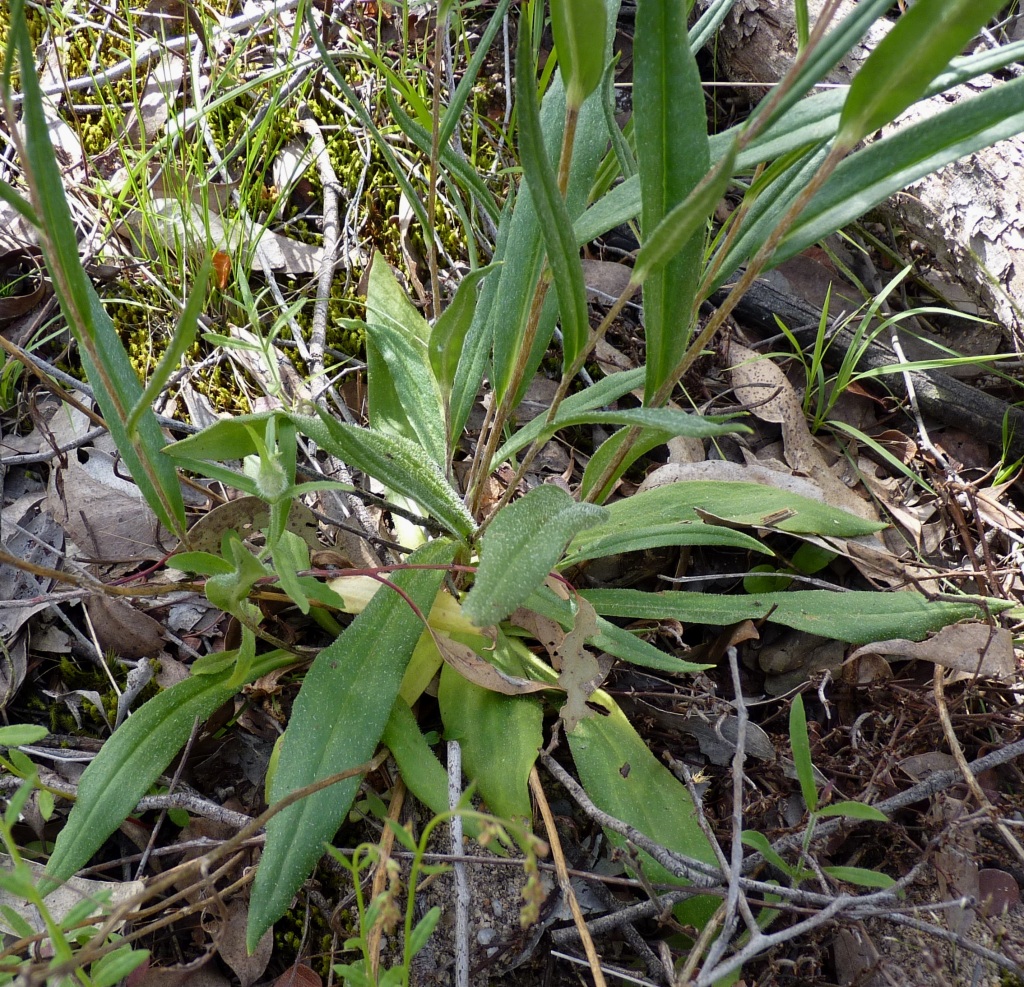Podolepis jaceoides
(Sims) Voss Showy PodolepisErect, simple or sparingly branched, herb to 50 cm high, renewed annually from thickened persistent rootstock; stems woolly or cobwebbed, sometimes glabrescent. Leaves scabrous to glabrescent, margins flat to revolute, entire; basal leaves lanceolate to oblanceolate, 3–15(–20) cm long, 5–15(–20) mm wide, petiolate, base amplexicaul, apex acute; cauline leaves linear to linear-lanceolate, 1–10(–20) cm long, 2–10(–15) mm wide, sessile, stem-clasping, apex acuminate. Capitula hemispherical, mostly 20–40 mm diam., solitary or a few in loose cymes; peduncles 4–15 cm long; involucral bracts with linear, glandular claws; lamina more or less ovate, scarious, virtually flat, smooth, shiny, apex acute to acuminate; intermediate bracts 10–18 mm long, with claws shorter than the lamina; inner bracts long-clawed. Florets bright yellow; ray florets 20–50, 15–30 mm long; disc florets numerous. Cypselas 2–3 mm long; pappus bristles 20–40, shortly connate at base, 6–10 mm long. Flowers Aug.–Nov.
LoM, MuM, Wim, GleP, VVP, VRiv, MuF, GipP, OtP, Gold, CVU, GGr, DunT, NIS, EGL, EGU, HSF, HNF, MonT, VAlp. Also SA, Qld, NSW, ACT, Tas. Scattered mostly across northern Victoria, but with isolated coastal occurrences at Cape Otway and Wilsons Promontory, and apparently rare. Habitats include riverine woodlands, mallee and coastal scrub.
Most Victorian collections previously identified as P. jaceoides, are now referrable to P. decipiens. The latter is readily distinguished by the retuse to obtuse laminas on the intermediate involucral bracts.
Podolepis jaceoides is readily distinguished from P. linearifolia by its often broader basal leaves, generally larger capitula, broader claws and shorter pointed apices on the intermediate involucral bracts.
Jeanes, J.A. (1999). Asteraceae. In: Walsh, N.G.; Entwisle, T.J., Flora of Victoria Vol. 4, Cornaceae to Asteraceae, pp. 652–666. Inkata Press, Melbourne.
 Spinning
Spinning

